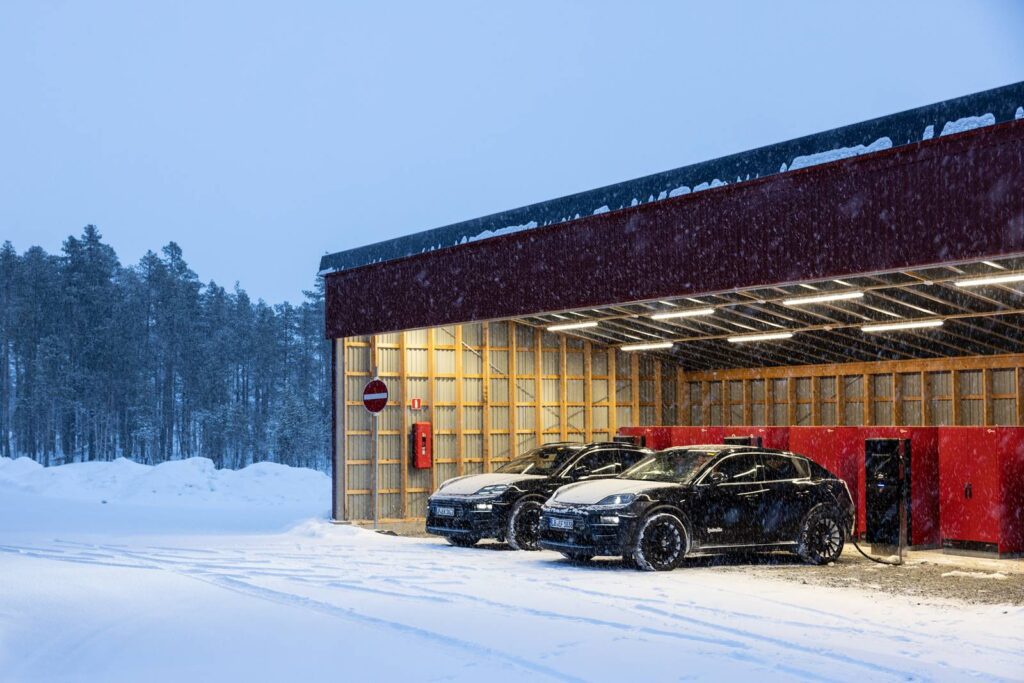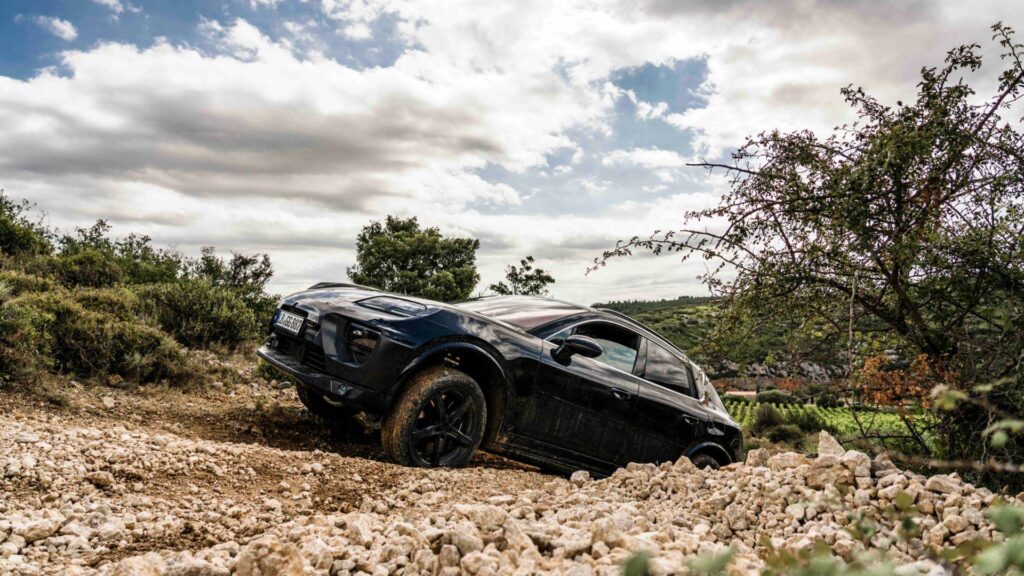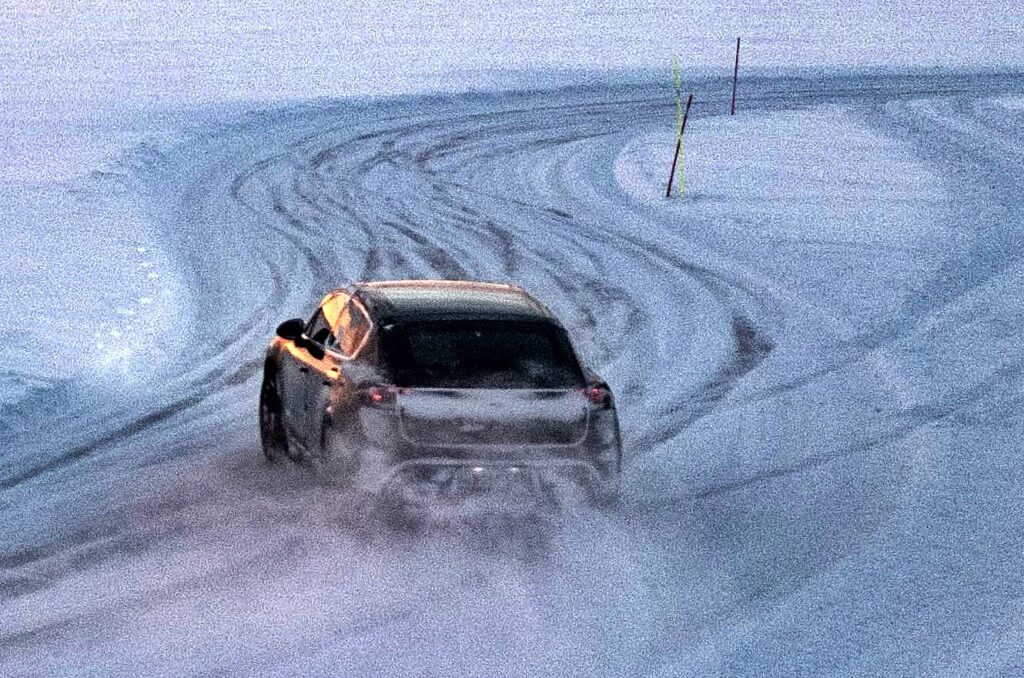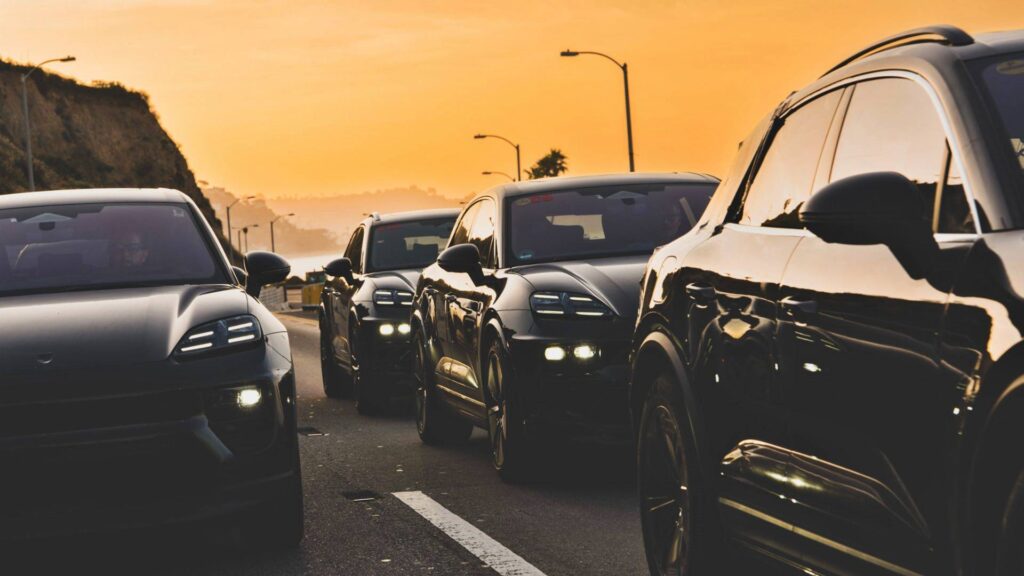Ten years after its appearance, Porsche’s smallest SUV – the Macan – is about to go into its second generation. Unlike the generation changes of other models, this is a significant one in two ways – it will have a fully electric powertrain and will be the first Porsche model to be built on the Volkswagen Group’s Premium Platform Electric (PPE) developed for Audi and Porsche.

It is therefore an entirely new development which requires additional testing processes which take into account its electric powertrain. While simulations are now commonplace in vehicle development, real-world testing in a wide range of conditions is still of great importance. Some issues may show up in extreme conditions of cold or heat, especially with the battery.
Fast charging with up to 270 kW
Recharging is an important part of EV ownership and minimising the time taken is what engineers work towards. The 800V architecture of the PPE in the new Macan enables high-performance fast charging, which is being tested worldwide as part of the development process.
The DC charging capacity at 800V charging stations is up to 270 kW. The charge level can be increased from 10% to 80% in less than 22 minutes at 400V charging stations. A high-voltage switch in the lithium-ion battery enables bank charging by effectively splitting the 800V battery into two batteries, each with a rated voltage of 400V.
This enables particularly efficient charging, without an additional HV booster, at up to 150 kW. AC charging is possible with up to 11 kW.

“There are different charging standards in our main markets. A major focus of the testing has therefore been on checking these different framework conditions in the different locations with our prototypes and adapting the technology accordingly where necessary. Charging simply has to work, wherever and whenever,” said Jorg Kerner, Vice-President Product Line Macan.
To test the interaction of all active driving components under extreme climatic and situational loads, the prototypes are driven all around the world. “We cover all temperature ranges. From minus 30 degrees C. in Scandinavia to 50 degrees C., For the latter, we use Death Valley in California,” said Kerner.

Focus on the driving dynamics too
“Of course, an SUV also has to work on any surface. That’s why we test not only on roads, but also off-road, on gravel, snow and ice,” he said. The new Macan has been developed with a keen focus on the driving dynamics typical of the brand, and a familiar steering feel. These core competencies of the sportscar manufacturer are a particular focus during testing.

“When we develop a new model, it’s always about the driving dynamics and precision. That’s Porsche. It’s in our DNA,” said Kerner. Through the various test stages, the objective is to coordinate the newly developed components and systems and to ensure the operational stability and smooth functioning of their interaction. In endurance tests, a car’s service life is simulated under the kind of harsh operating conditions that will later only be experienced by customers at the absolute limit. To date, the camouflaged prototypes of the next Macan have completed more than 3.5 million test kilometres on test tracks and public roads.

Porsche exclusively uses the latest generation of permanently-excited PSM motors on the front and rear axles. They provide overboost power of more than 450 kW, offer excellent efficiency and enable optimum reproducibility of the power output. The electronically controlled Porsche Traction Management manages the distribution of the more than 1,000 Nm of torque with Launch Control in the top model in almost real time.

To offer the broad spectrum between high performance and comfort for which the Macan is known, the engineers have deployed a Porsche Active Suspension Management system with two-valve damper technology, air suspension, rear-axle transverse lock and, for the first time, rear-axle steering with a steering angle of up to 5 degrees.
Design with efficiency – 0.25 Cd
“But it’s always about efficiency too. And design,” Kerner added. One challenge was to maintain the product identity of the successful Macan model series while at the same time meeting the aerodynamic requirements needed to ensure high efficiency and therefore also a high range.

It was accordingly important to ensure close cooperation between the leaders of the two teams during the development stages in the Design department and the aerodynamic testing in Porsche’s own wind tunnel. “Finding the optimal connection between our design principles and the specifications given to us by the aerodynamics engineers is certainly a challenge,” said Peter Varga, Director Exterior Design at Style Porsche. “We’re working together on every millimetre to achieve the optimal balance between aesthetics and function.”
Through this teamwork, the Macan combines its design DNA with range-optimised aerodynamics. This was achieved not only through a striking silhouette but also through the components of Porsche Active Aerodynamics and other targeted measures.

“The active aerodynamic elements all significantly contribute to range,” said Thomas Wiegand, Director Aerodynamics and Aeroacoustics. “We have an automatically extending rear spoiler and active cooling flaps on the front air intakes.”
There are also variable elements on the underbody. The underfloor is flat and closed like that of a racing car, even in the rear axle area. The fairings there are flexible and also ensure low air resistance when rebounding – an innovative solution in combination with the streamlined, largely closed wheels and the aerodynamically optimised tyre contours.

During normal cruising on a country road, the Macan automatically assumes its ideal streamline. The rear spoiler moves into the eco position, the air flaps close and the chassis level lowers. In this situation, Wiegand and his team measured a drag coefficient of 0.25 Cd (previously 0.35).
All this make the new Macan one of the most aerodynamic SUVs – with major benefit to running efficiency. The range according to WLTP will be more than 500 kms for all variants, which should put it on par with the Audi Q4 e-tron and Mercedes-Benz EQE.

The new Macan is due for launch later this year and as the Geneva Motor Show is probably too close (next month), it could be the Paris Motor Show in October. Or as is increasingly common, one of the bigger events in China, the world’s largest EV market.

